 (Left) Dan Istitene/Getty Images; (Right) Khaled Desouki/AFP/Getty Images
(Left) Dan Istitene/Getty Images; (Right) Khaled Desouki/AFP/Getty Images
Article
The Real Truth looks back on the past year to better understand what lies ahead.
Learn the why behind the headlines.
Subscribe to the Real Truth for FREE news and analysis.
Subscribe NowThe year 2011 ended the way it began: troubling. As December 2010 turned to January, the world wondered if it would be taken on a wilder ride than the previous year.
It did not have to wait long to find out.
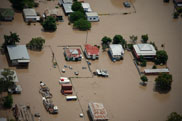 Patrick Hamilton/AFP/Getty Images
Patrick Hamilton/AFP/Getty ImagesUnrest in the Arab world continued, with the deaths of more than 200 Tunisians. Floods in drought-stricken Australia submerged the country, killing 35. A Moscow airport bombing took the lives of 37 people. And Brazil had its worst mudslides and flooding since 1967, with more than 800 reported dead.
In North America, a United States democratic congresswoman was the target of a grocery store shooting, which ended with six deaths. As a result, a firestorm of political punditry pitted the left against the right, splitting the country even more, and setting it up for what would become a milestone year for divisive political rhetoric.
Soon after, demonstrators toppled Egyptian leader Hosni Mubarak, sparking protests in Yemen, Syria and Libya. Unrest also spread to Bahrain, and then to the United States, where hundreds of state employees camped in and around Wisconsin’s capital building to protest benefit cuts. To block the measures, several senators fled the state.
March brought worse problems, with the largest earthquake in Japan’s history producing the ninth-deadliest tsunami ever, and spawning a nuclear crisis.
April’s headlines about Brazil’s worst school shooting, over 300 deaths from United States tornadoes, and the end of a bloody Ivory Coast standoff, added to the year’s sobering tone.
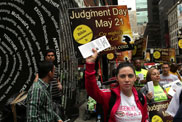 Spencer Platt/Getty Images
Spencer Platt/Getty ImagesThen came May, and talk of a prophesied doomsday. Thousands were frightened, with some committing suicide to escape the scenario. The slated day came and went. (Another date for the “end of the world” was set up for October, but it also failed.) This refocused attention on the Mayan calendar’s supposed December 2012 end-of-the-world date.
From there, the year continued spiraling downward as unemployment, economic woes, wars overseas, terrorism and natural disasters took their toll. One after another, tragic news reports demonstrated that mankind could barely address one crisis before another screamed for its attention.
Meanwhile, science progressed with startling speed: the first human embryos were cloned, the aging process of mice was reversed, and biologists broke the code of HIV replication. In addition, astronomers unveiled a planetary system consisting of six planets 2,000 light-years from Earth.
But such advances seemed to make little difference. While scientists made headway on Parkinson’s disease research, a mysterious kidney-failure illness in Central America killed thousands of manual laborers, and a deadly new strain of antibiotic-resistant bacteria was found.
The start of 2012 reinforced this. Swine and bird flu resurfaced, sparking panic among health officials about its potential spread, and scientists reported that the number of adults worldwide who suffer from chronic acid reflux disease skyrocketed.
Just as last year, it appears that while science can explore the vast universe, it is still unable to explain crises on this planet: terrorism still affects countries worldwide 10 years after the September 11 World Trade Center attacks (and the 2011 death of Osama bin Laden), Africa is still rocked by disease, global currency values are depreciating, Iraq continues to be in a fragile state since December’s American pullout date, and the prospect of a nuclear-armed Iran continues to threaten stability in the Middle East.
Such a paradox—with its discoveries, disagreements and disasters—is nothing short of puzzling.
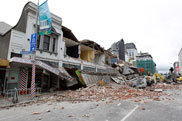 Martin Hunter/Getty Images
Martin Hunter/Getty ImagesWorst, Largest, Deadliest
Three words were at the forefront of 2011’s weather reports: worst, largest and deadliest. Australia had the worst flooding in more than 100 years, incurring $30 billion in damages. Christchurch, New Zealand’s 6.3-magnitude earthquake was the city’s worst in decades, killing 181. This was topped by Japan’s 9.0-magnitude mega temblor—the largest in the nation’s history and fourth largest in the world, which prompted a tsunami, leaving 16,000 people dead.
Likewise, the Philippines weathered its deadliest cyclone in three years, which killed more than 1,500 and drove 45,000 others from their homes. Turkey also suffered its worst earthquake in a decade—more than 600 died. Thailand had its worst flooding in half a century—two thirds of the country was underwater—causing over 500 deaths.
Mexico is also suffering its worst drought in more than six decades, as is Somalia. In a three-month period, extreme drought and related diseases claimed the lives of some 29,000 Somali children under age 5. The United Nations has referred to it as the “worst humanitarian disaster in the world.”
The United States was not immune. The country experienced 14 weather disasters that each caused $1 billion or more in damages, totaling $52 billion. These included tornado outbreaks—with a record 626 deaths—the Southwest drought, the Mississippi River floods—which destroyed thousands of acres of crops—and unprecedented wildfires across Texas, New Mexico, and Arizona that consumed close to five million acres of land, with a total of more than eight million acres burned across the U.S.
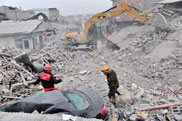 Mustafa Ozer/AFP/Getty Images
Mustafa Ozer/AFP/Getty ImagesOne of the most significant weather events was Hurricane Irene, preceded a week earlier by an abnormal Virginia earthquake. The storm affected 65 million people in 11 East Coast states, resulting in at least 45 deaths and an estimated $15 billion total in losses. It inundated large swaths of Vermont and in some cases destroyed sections of its infrastructure.
A lead scientist at The Nature Conservancy told CBS News that 2011 was a “perfect storm of events.”
“Things were a lot worse—three-to-four times worse in terms of big disasters than we’ve ever seen before...” he said.
Uncertainty Equals Unrest
When the global financial market collapsed in 2008, the world thought it would be out of the woods within a short time. Last year continued to prove otherwise. Despite trillion-dollar bailout efforts, especially in the U.S. and Europe, the international community had to push, pull, fight and scrape for even a glimmer of positive economic momentum. The world still remains on the brink of monetary meltdown, and analysts predict problems will only increase.
Both Brussels and Washington languished in indecision and infighting on how to secure their futures. One only has to look to the failure of the U.S. bipartisan “super-committee” to agree on budget cuts, and the fact that 2011 saw Congress sign the fewest bills into law in two decades.
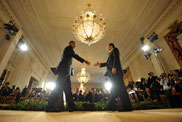 Jewel Samad/AFP/Getty Images
Jewel Samad/AFP/Getty ImagesU.S. indecision further diminished its global status. A visit by China’s premier compelled Washington to pander to Beijing, which 47 percent of Americans now consider the world’s leading economic power. Another blow to the country was Russia’s expansion of its space program the same year America’s 30-year program was forced to an end—as well as planned military cutbacks that could further weaken the ability of the U.S. to defend itself.
In Europe, politicians came up empty-handed after the fifth summit convened to solve the continent’s euro crisis. It did, however, highlight the continent’s on-again-off-again relationship with Britain, causing some to question if a divorce between the island nation and the EU could occur in the coming year.
Fed up with politics, the average citizen—many still jobless, debt-saddled and discontented—began taking matters into their own hands. Rioters rampaged through Athens, burned London, and shut down Oakland’s harbor. Thousands “occupied” Wall Street, then cities across the world.
Most everyone wanted one thing: someone who could bring back their comfortable Western lifestyles, with minimal effort on their part. But as politicians, leaders and strategists attempted to cobble together solutions, they always seemed to come up short.
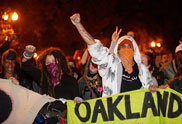 Kimihiro Hoshino/AFP/Getty Images
Kimihiro Hoshino/AFP/Getty ImagesViolent Spring
The economic crunch did not just affect the Western world. Few imagined one Tunisian protester’s self-immolation in 2010 would plant the seeds for the revolt that swept Arab nations throughout 2011. Longtime leaders fell like dominoes. Libyan ruler Moammar Gadhafi, who had ruled the country for 42 years, was the last to be deposed.
Revolutions brought chaotic violence. Unknown numbers were killed by snipers and many more injured. Rapes were common. Tanks patrolled cities, attacking civilians. Buildings were set ablaze. Reports described stonings, beatings, innumerable arrests, torture, hangings, beheadings and mass graves. In Syria, the carnage continues. Bahrain is also considered unstable.
The Western world watched with high hopes for new democratic allies in the region. Yet at the outset of 2012, budding Arab Spring fruits are evidencing Islam-influenced governments. In Tunisia, an Islamic political party dominated elections. In Egypt, the Muslim Brotherhood achieved the same. In Libya, the transitional government declared Sharia law will be the foundation for the post-Gadhafi era.
Some warn that a rise of such governments could provide grounds for the spreading of radical Islam in 2012.
“In all readings of Islam, especially the ones that now dominate in the Middle East, there is huge reverence for the first four caliphs who succeeded Muhammad as leaders of the emerging Muslim community,” The Economist reported. “All subsequent Muslim empires had caliphs and the abolition of the last caliphate—by Turkey’s new rulers in 1924—sent shock waves through the world of Islam.”
From northwestern Africa’s Morocco to eastern Iran, many fear the world is witnessing the rebirth of a multinational “Islamic caliphate.”
Religion and Politics
The Arab Spring illustrates a growing trend: the prominence of religion in politics. The Vancouver Sun stated, “What has emerged in all the countries where there have been preliminary elections or other selections of transitional authorities is the knowledge that Islamist parties will dominate the charting of the future.”
Yet this trend transcends Islam.
Pope Benedict XVI again called for Europe to return to its religious roots during a 2011 visit to Germany. Der Spiegel summarized a point from the pope’s speech before parliament, in which he said, “European values such as human rights and equality stem from a belief in God and said ‘to ignore this or to see it as part of our past would be an amputation of our culture as a whole.’”
Rome also stated that the question of control of the holy sites is vital for peace between Israel and Palestine. Agence France-Presse quoted Cardinal Jean-Louis Tauran, head of the Pontifical Council for Interreligious Dialogue, who recommended the sites be “safeguarded” by a larger group of states under “a special, internationally-guaranteed statute.”
In addition, the Vatican has also called for religious ethics to play a greater role in global economic affairs. From the Muslim Brotherhood to the Catholic church, religion appears to be increasingly intertwined with world politics.
Forecast for 2012
Given 2011’s events, many agree the world is in for a rocky ride. Unending commentaries describe what could happen in 2012.
“If 2011 was the year when governments were overthrown in the streets, 2012 could be the year when politics plays out at the ballot box,” Foreign Policy reported. “A third of the world’s nations will be holding local, state, or national elections…” Votes will occur in a number of Arab Spring countries, as well as the U.S., China, Russia, France and Mexico, among others.
Consider a few more forecasts from Reuters:
“With elections and leadership changes in the most powerful countries, Europe in crisis, ferment in the Middle East and worsening economic hardship driving unrest and discontent everywhere, 2012 could be just as volatile as 2011 if not worse.”
The media outlet further stated: “At worst, 2012 could still see a disorderly breakup bringing with it a chain of defaults, bank runs and civil unrest, not to mention a savage global economic shock worse than that of 2008.”
One of the biggest concerns for 2012 is a rise in food prices. La Nina, the weather condition blamed for crippling drought in the Western hemisphere, is expected to persist until mid-year. Moreover, natural disasters have jumped since 1970, something that could also impact this year’s harvest.
“There were 820 natural catastrophes in 2011, about average for the past 10 years but significantly higher than the 30-year average of 630 events per year,” a separate Reuters article reported.
According to reinsurance giant Munich Re, natural disasters caused more than a third of a trillion dollars in damage.
“A sequence of devastating earthquakes and a large number of weather-related catastrophes made 2011 the costliest year ever in terms of natural catastrophe losses,” the firm stated in a release.
As of January 2012, floods in Brazil have severely affected 116 cities, an unprecedented out-of-season tornado occurred in North Carolina, and 2.6 million Mexicans remain without drinking water due to extreme drought.
Searching for Answers
Everyone wants to know the future. There is no end of fortune tellers, tarot-card readers, and numerologists who claim to know what will occur this year.
Others searching for answers rely on self-professed religionists claiming the world will end. Even though these so-called prophets cannot prove their theories, they generate fear with terms such as “Armageddon,” “end of the world,” and “end of days.”
This is a crucial part of the “2012 phenomenon.” Because most see world events becoming increasingly dire, some wrongly assume theories regarding that particular date explain the why behind what they see in daily headlines.
The disciples that lived during Jesus Christ’s time were equally curious about what they called the “end of the age.” The book of Matthew records, “And as He [Christ] sat upon the Mount of Olives, the disciples came unto Him privately, saying, Tell us, when shall these things be? And what shall be the sign of Your coming, and of the end of the world [age]?” (24:3).
“And Jesus answered and said unto them, Take heed that no man deceive you. For many shall come in My name, saying, I am Christ; and shall deceive many. And you shall hear of wars and rumors of wars: see that you be not troubled: for all these things must come to pass, but the end is not yet. For nation shall rise against nation, and kingdom against kingdom: and there shall be famines, and pestilences [disease], and earthquakes, in diverse places” (vs. 4-7).
Christ made clear that there would be an “end of the world”—properly translated “age”—yet He said it would not involve Earth’s complete destruction.
Plain Understanding
The Bible was written “precept upon precept…line upon line; here a little, and there a little” (Isa. 28:10). Therefore, to understand the full picture of what Christ said—and why—one must put its pieces together.
Many who follow world news see each story as an isolated event. Even though journalists sometimes connect concepts (e.g., higher food prices result in riots), their explanations still lack a crucial component—why they happen!
The tag line of The Real Truth is “a magazine restoring plain understanding.” This means that not only does it explain facts, but it also details causes of world troubles—violence, famine, disease, political upheaval, religious confusion, economic turmoil, and increasing natural disasters.
Most do not realize that one-third of the Bible details future events—prophecy. Put together, all these scriptures reveal a great Plan for mankind. Just as a piece’s color and shape determines where it will fit in a jigsaw puzzle, individual world events interlock to create a greater picture.
Imagine working on a 1,000-piece puzzle without a picture of how it should look when finished. While the puzzle designer knows it contains a picture of a blue lake, green tree, and red rosebush, one would not know this until all the pieces were fitted together.
Without a visual guide, it would have to be assembled one section at a time. For example, green pieces could be matched first, then blue. Slowly, each section would lead to the next until the entire picture appeared.
Similarly, world events connect to form a broad canvas that illustrates what will yet occur. Consider world events as many pieces of a giant puzzle that when assembled reveal a sobering picture!
Start with the United States. A faltering economy means fiscal cutbacks and layoffs, which often mean a reduced police force. Decreased law enforcement inevitably leads to increasing crime. A weak economy also means more poverty—with those affected resorting to desperate measures, including rioting. This can cause even more economic hardship as cities are forced to repair damage to already crumbling infrastructure.
Now consider this from a global perspective.
Economically struggling developed nations are unable to help others experiencing natural disasters that cause crop destruction and rising food prices. This leads to famine and disease. Food prices can also spark unrest, resulting in larger conflicts, the rise of power-hungry leaders, and even war—all of which Christ said would occur before His Return! Given this scenario, it is easy to see how countries will quickly collapse when prophesied conditions hit with full force.
Yet there is an underlying reason for 2012’s troubling picture—and it leads to the greatest message of hope the world has ever received.
In his book The Bible’s Greatest Prophecies Unlocked! – A Voice Cries Out, David C. Pack states, “You can know the PLAIN TRUTH ANSWERS to all crucial questions about the future—in fact, you should! And they are all laid out right there on the pages of your Bible! Like so many pieces of a large puzzle that only make sense when fully assembled, each of these questions and others represent a part of a bigger picture, one that is shocking far beyond the imagination of those who think they know the meaning of Bible prophecy.”


